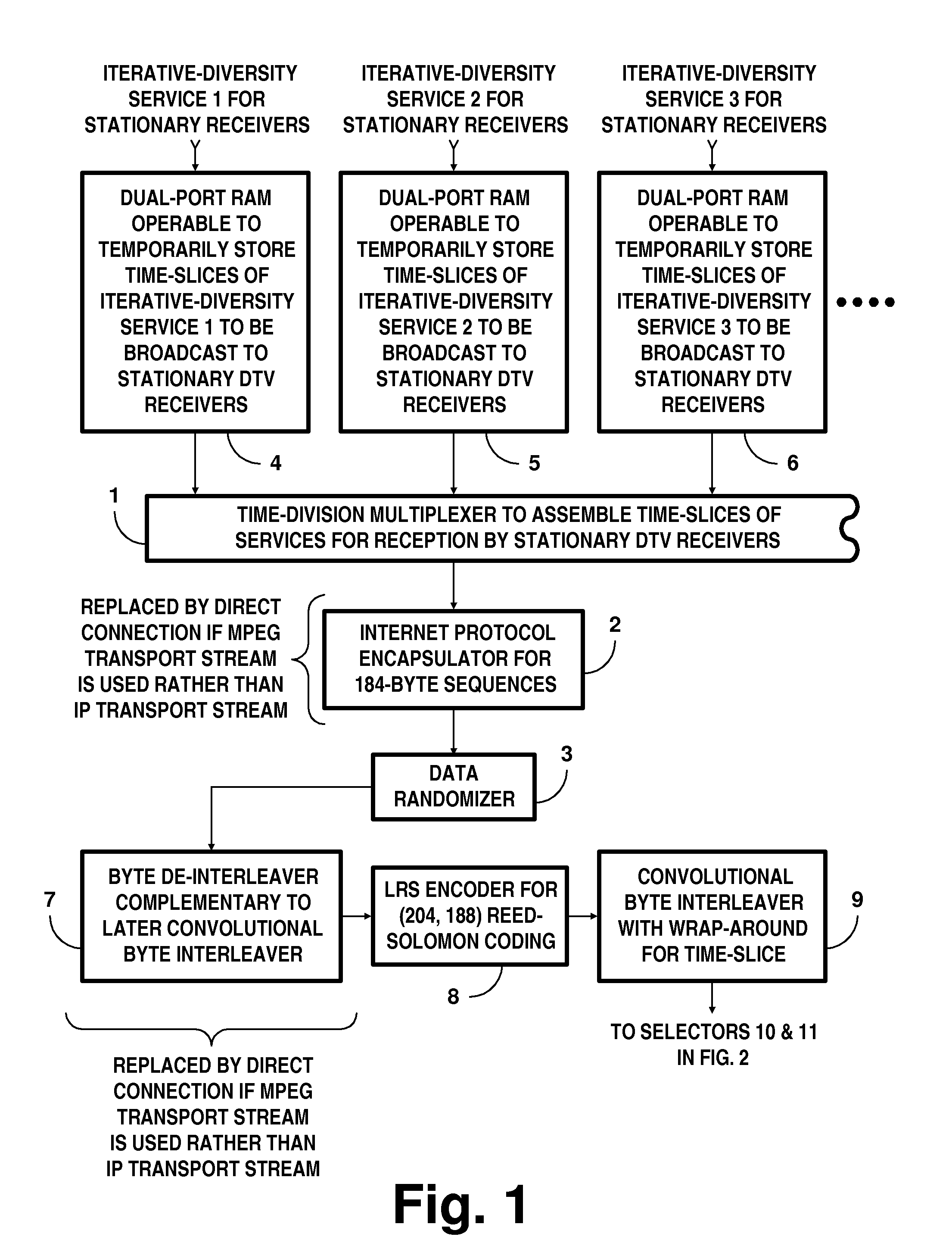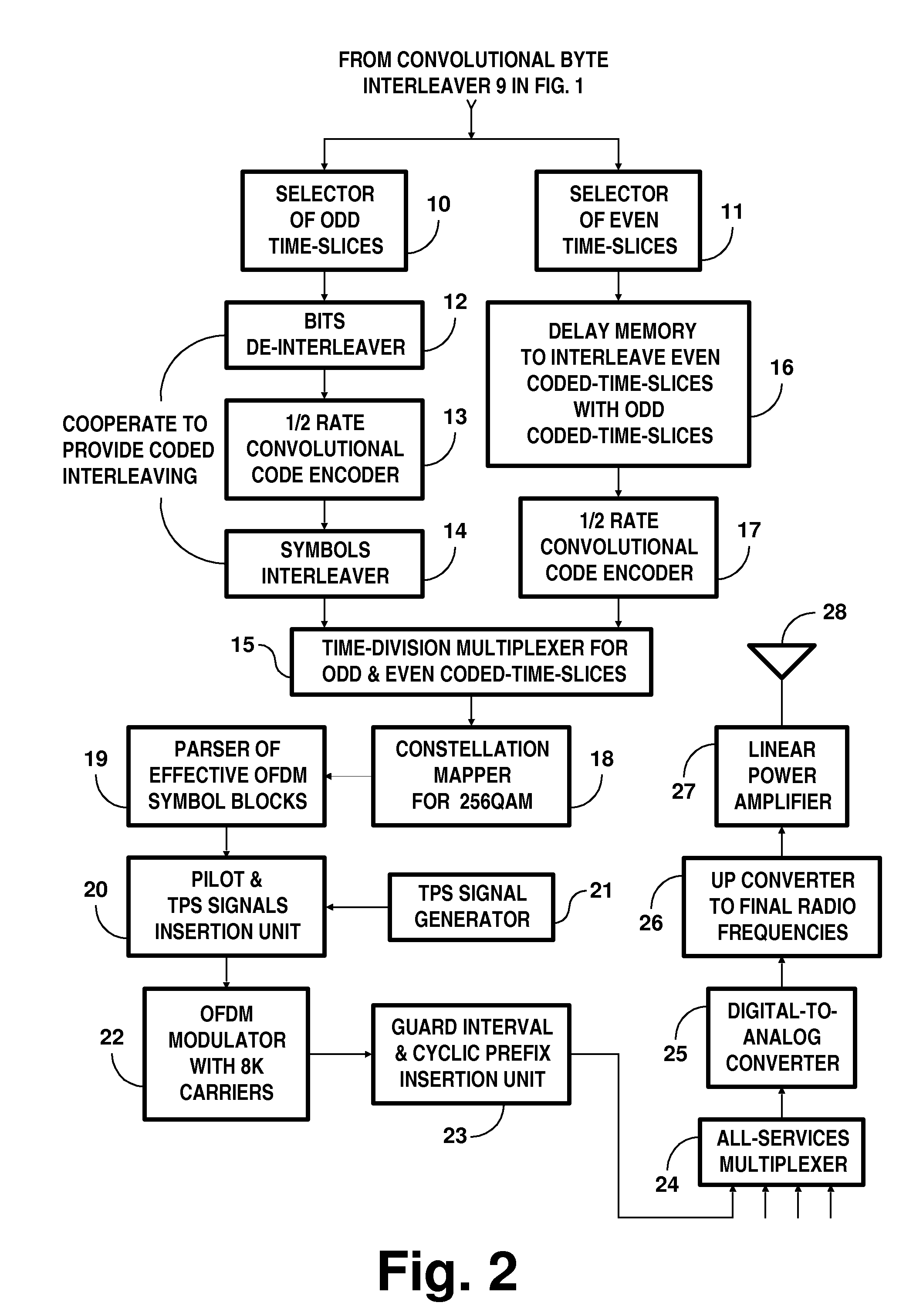DTV systems employing parallel concatenated coding in COFDM transmissions for iterative diversity reception
a technology of cofdm and parallel coding, applied in the field of system of overtheair broadcasting of digital television (dtv) signals, can solve problems such as affecting television reception perceptibly, and affecting the reception of dtv signals
- Summary
- Abstract
- Description
- Claims
- Application Information
AI Technical Summary
Benefits of technology
Problems solved by technology
Method used
Image
Examples
Embodiment Construction
[0060]FIGS. 1 and 2 together show a portion of a DTV transmitter generating COFDM signals for reception by stationary DTV receivers. Apparatus for generating bit-wise forward-error-correction (FEC) coding and subsequent COFDM signals is shown in FIG. 2. FIG. 1 depicts apparatus for processing time-slices of services to be broadcast to stationary DTV receivers for iterative-diversity reception.
[0061]A time-division multiplexer 1 for interleaving time slices of services to be broadcast to stationary DTV receivers is depicted at the middle of FIG. 1. The time-division multiplexer 1 successively selects time-slices of these various services to be reproduced in its response, which is supplied from its output port. FIG. 1 shows the output port of the multiplexer 1 connected to the input port of an internet protocol encapsulator 2, the output port of which IPE 2 connects to the input port of a data randomizer 3.
[0062]The internet protocol encapsulator 2 is used only if the services for rec...
PUM
 Login to View More
Login to View More Abstract
Description
Claims
Application Information
 Login to View More
Login to View More - R&D
- Intellectual Property
- Life Sciences
- Materials
- Tech Scout
- Unparalleled Data Quality
- Higher Quality Content
- 60% Fewer Hallucinations
Browse by: Latest US Patents, China's latest patents, Technical Efficacy Thesaurus, Application Domain, Technology Topic, Popular Technical Reports.
© 2025 PatSnap. All rights reserved.Legal|Privacy policy|Modern Slavery Act Transparency Statement|Sitemap|About US| Contact US: help@patsnap.com



